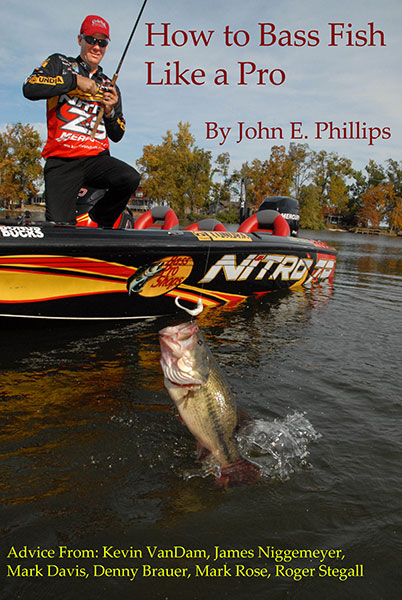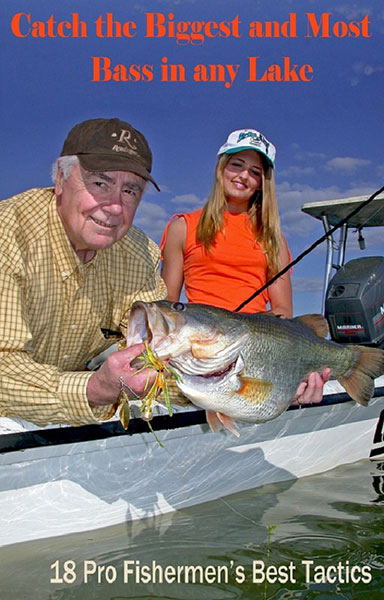Hunt for Shallow Bass at Any Time of Year by Jimmy Houston
Day 2: Shallow-Water Pre-Spawn Bass with Jimmy Houston
Editor’s Note: When largemouth bass head for the shallows in the fall or at anytime of the year, finding them begins with knowing where they’re not.
  In springtime, water color, water temperature and other factors affecting feeding aren’t nearly as important to bass as is spawning. I divide spring bassing into four-different periods: the early prespawn, the prespawn, the spawn and the postspawn. In springtime, water color, water temperature and other factors affecting feeding aren’t nearly as important to bass as is spawning. I divide spring bassing into four-different periods: the early prespawn, the prespawn, the spawn and the postspawn.
In late winter and very-early spring (the early prespawn), I fish the upper 25 percent of a lake (often the northern end). Generally, bass in this portion of a lake will begin to spawn first. This area, where most creeks or rivers feeding a lake enter the lake, warms-up first. Water from the warm spring rains enters here. In many lakes, especially in the South, the terrain at the upper end of a lake is somewhat flatter than that of the lower end. Flatter terrain usually means more shallow water, which heats-up more quickly than deeper water. Having learned that bass spawn in coves, creeks and bays, I ignore the main lake area in that upper 25 percent. The sun travels across the southern part of the sky during the early prespawn, providing more sunlight on the northern shoreline than on the southern shore. The warmest days in very early spring occur when a south wind prevails. A south wind blows warm water onto the northern shore first, moving the cold water out of the bays and coves. Wave action raises the pH in coves and bays, and a higher pH being conducive to the spawn. I search for bass in coves and pockets of the northern shoreline, because the water is warmest there and has the highest pH of all water in the upper quarter of the lake.
  Now let’s discuss where bass position themselves in the coves during the early prespawn. Since we know bass don’t like to spawn on steep or muddy banks, we can eliminate these types of terrain from our fishing plans. Because most bass prefer to lay their eggs in the back portion of a cove or bay, we won’t fish this region either. During this time of year, concentrating on points is the most productive, and on the first 40 percent of banks leading into a pocket, a cove or a bay. Bass are most likely to be found in these areas as they await the spawn. Now let’s discuss where bass position themselves in the coves during the early prespawn. Since we know bass don’t like to spawn on steep or muddy banks, we can eliminate these types of terrain from our fishing plans. Because most bass prefer to lay their eggs in the back portion of a cove or bay, we won’t fish this region either. During this time of year, concentrating on points is the most productive, and on the first 40 percent of banks leading into a pocket, a cove or a bay. Bass are most likely to be found in these areas as they await the spawn.
  These tactics are just a sample of what you’ll learn in the new Kindle eBooks, “How to Bass Fish Like a Pro” and “How to Catch the Biggest and Most Bass in Any Lake” by John E. Phillips. Go to http://www.amazon.com/kindle-ebooks, type in the names of the books, and download them to your Kindle, and/or download a Kindle app for your iPad, SmartPhone or computer. These tactics are just a sample of what you’ll learn in the new Kindle eBooks, “How to Bass Fish Like a Pro” and “How to Catch the Biggest and Most Bass in Any Lake” by John E. Phillips. Go to http://www.amazon.com/kindle-ebooks, type in the names of the books, and download them to your Kindle, and/or download a Kindle app for your iPad, SmartPhone or computer.
|
